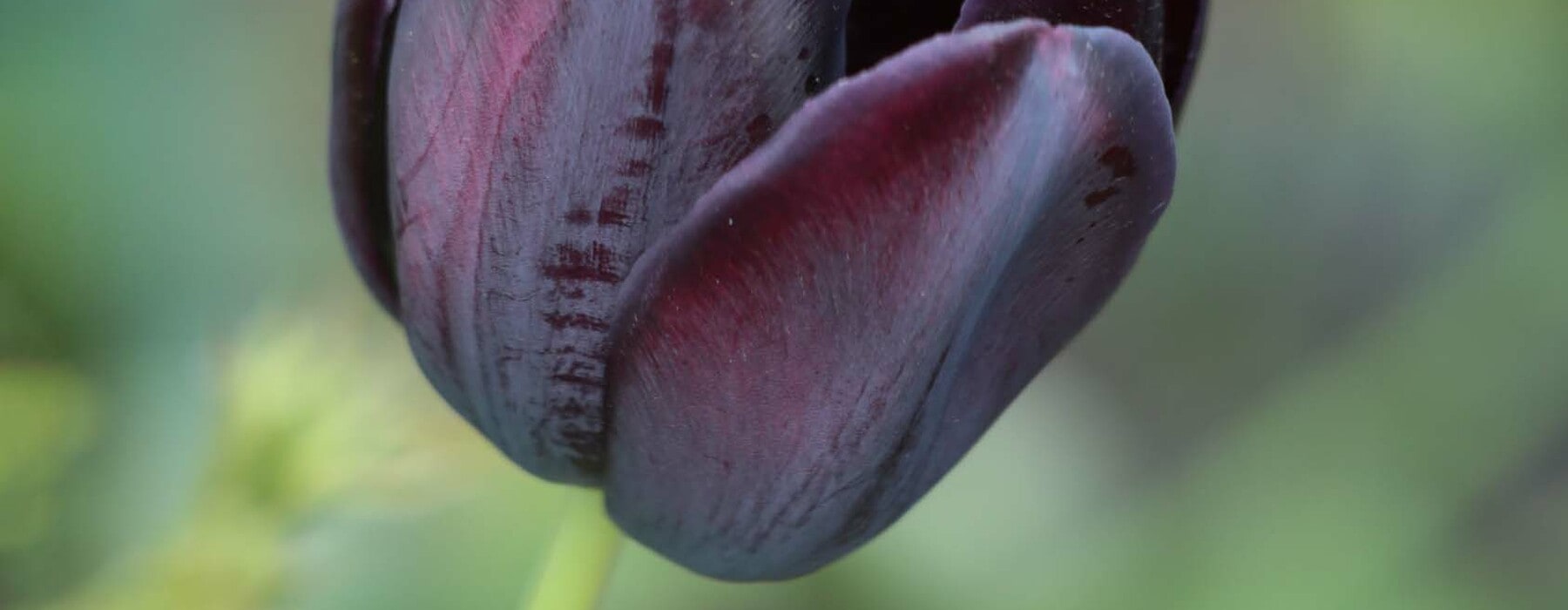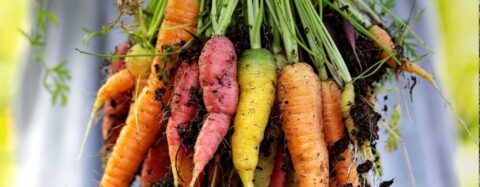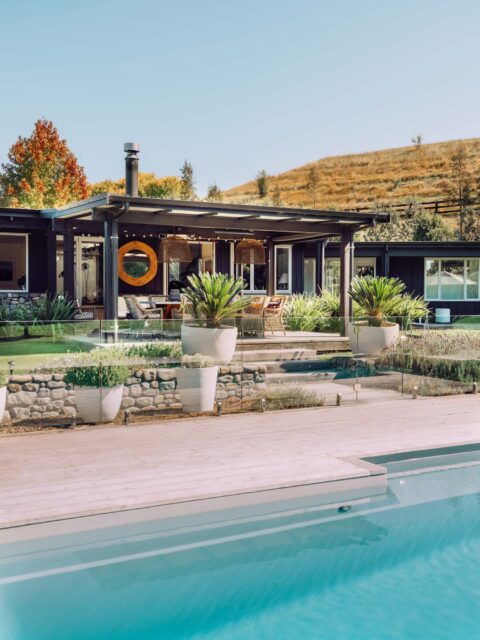Dabble with the dark side of the bloom and introduce some gothic garden glamour.
There is an ongoing discussion at our house about which superhero is the coolest. Without hesitation, I always say it’s Batman. Haunted and brooding, with a Batcave and a mansion thrown in for full Gothic effect, the Dark Knight not only has a tragic backstory but his inky colour palette is much more stylish than the goody-good primary colours favoured by other superheroes. Dark-coloured plants will also make your garden more edgy. Think of them like the black velvet curtains of your planting scheme – setting the scene for drama and adding a dash of the unexpected.
Unless you want to go full Addams Family, it’s better to use black plants as a foil to enhance other colours instead of planting them en masse. Fortunately, as with apparel, black pretty much goes with everything. Combine it with white and silver plants to create a monochromatic, modernist colour scheme, add it to orange and lemon hues for some kick, or use it to make pretty pinks and purples more serious and less saccharine.
Something that makes black plants even more desirable is that they’re very rare in nature. In fact, none is actually black. Most are dark shades of burgundy, purple or brown. Here are some brooding beauties that are doing their very best to enter the shadows and be a little bit noir.
Petunia
Whether clothed in red and white circus-tent stripes or bursts of candy pink, petunias have been considered cheerful but slightly frumpy hanging-basket flowers. Then in 2011 plant breeders in the UK released ‘Black Velvet’, touted as the first truly black flower in the world, and petunias grew up. The result of four years of plant breeding using pollen from a mutant petunia (no GM here), it truly is a velvety black cat of a bloom, although some spoilsports like to point out that it’s actually a very dark purple and that the quest
to breed or find a true black flower still evades us.
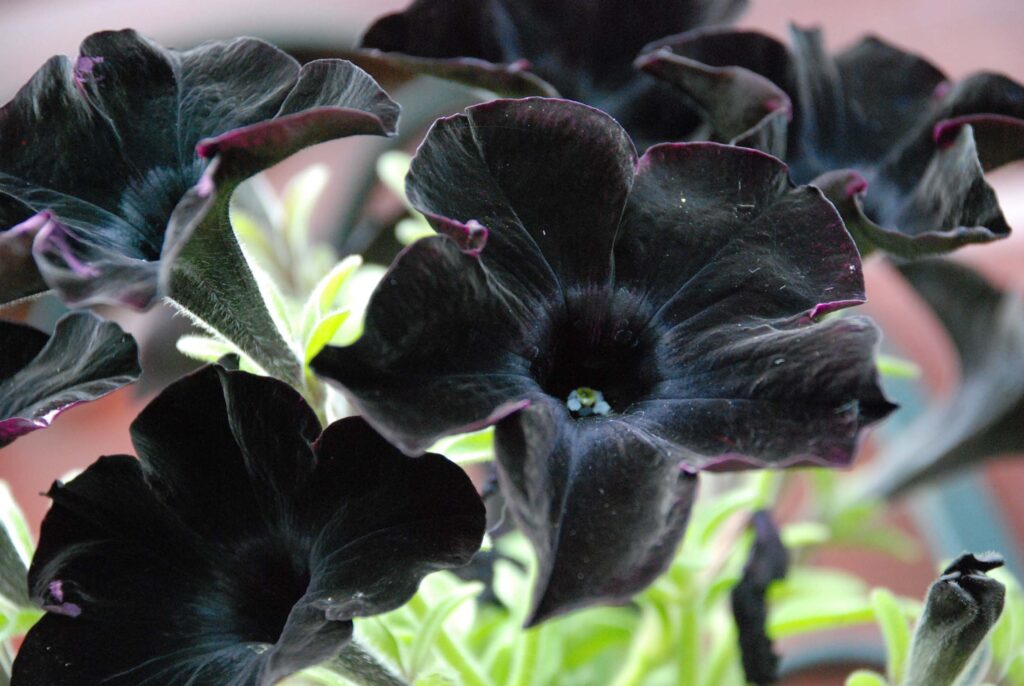
Taro
Foliage lovers, here is one for you. Taro, or colocasia, with its magnificent heart-shaped leaves, already has edgy sculptural chops but is even more striking when adorned in a dusty black cloak. ‘Black Magic’ is a spectacular muted dark grey, reminiscent of bat wings or elephant ears. These tropical beauties are frost-tender, like boggy, damp areas in a garden and can be grown along the edge of a pond.
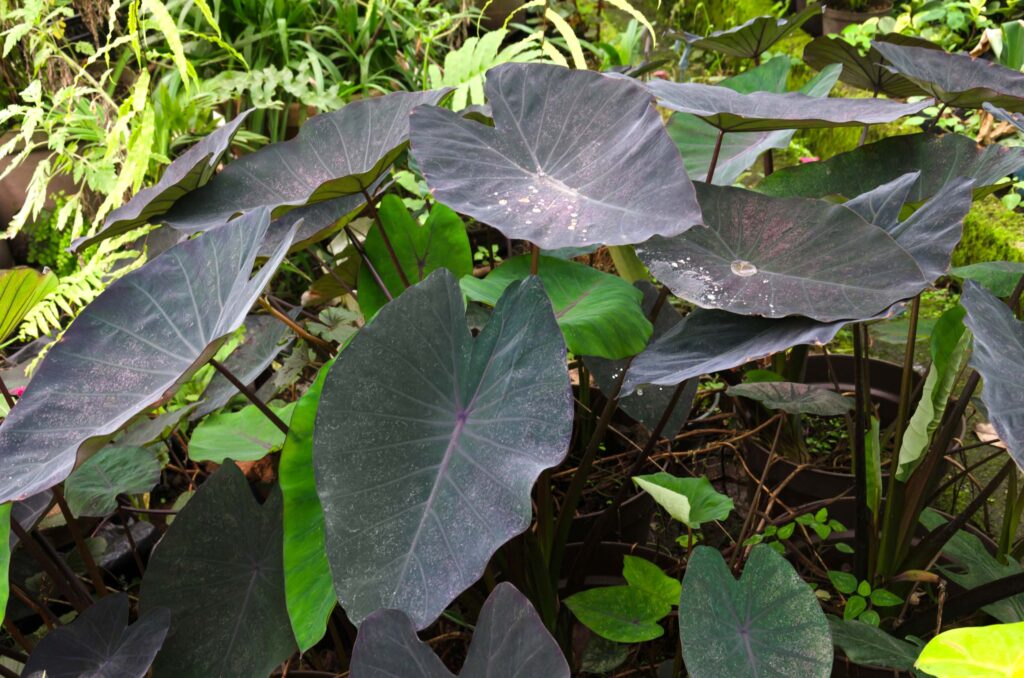
Aeonium
With their architectural rosettes, these hardy succulents are a statement on a stem. They’re ideal for growing in pots as they require very little watering. However, I once saw a bed of white standard ‘Iceberg’ roses entirely underplanted with a low-growing ice-blue variety of aeonium and it looked incredible. Deep burgundy Aeonium ‘Schwarzkopf’ is equally striking. This Moroccan native grows up to 60cm tall and half a metre wide if given space. These plants are easy to propagate – just break off a stem, leave it to form a callus, then replant it. Simple!
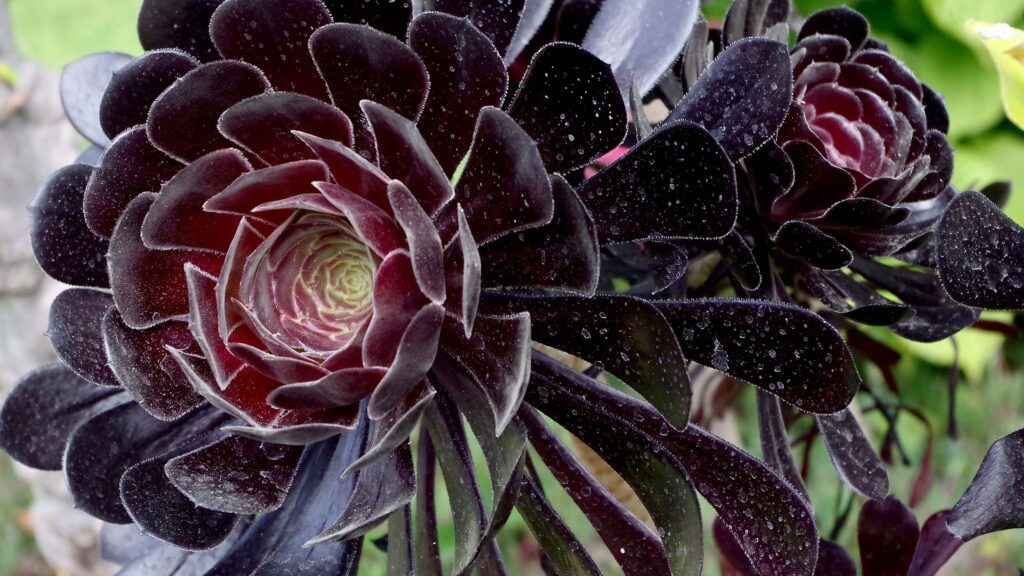
Tulip
The quest to breed a black tulip evaded plant breeders for centuries, and was the subject of the Alexandre Dumas novel The Black Tulip. Since its publication in 1850, several incredibly dark tulip varieties have been released, including ‘Queen of Night’, ‘Ronaldo’ and ‘Black Diamond’. While all of them veer more to dark wine than true black, they’re still striking in a spring garden, particularly when planted with pink, white or orange tulips. If you’re quick, you still have time to plant some bulbs now before the winter chill triggers them out of their dormant state.
Hollyhock
These cottage favourites become glamorous when they abandon their usual pink shades for deep burgundy varieties like ‘Jet Black’ (right) and ‘Ebony Towers’. For a modern palette, grow them along a white- gravel pathway or in large white planters. Hollyhocks are biennials, so they usually spend their first year establishing roots and leaves, which can look a bit boring. If you don’t want to look at a pot of green leaves for a year, grow them in large plastic pots out of sight, then move them into the planters once they produce their tall spires of flowers.
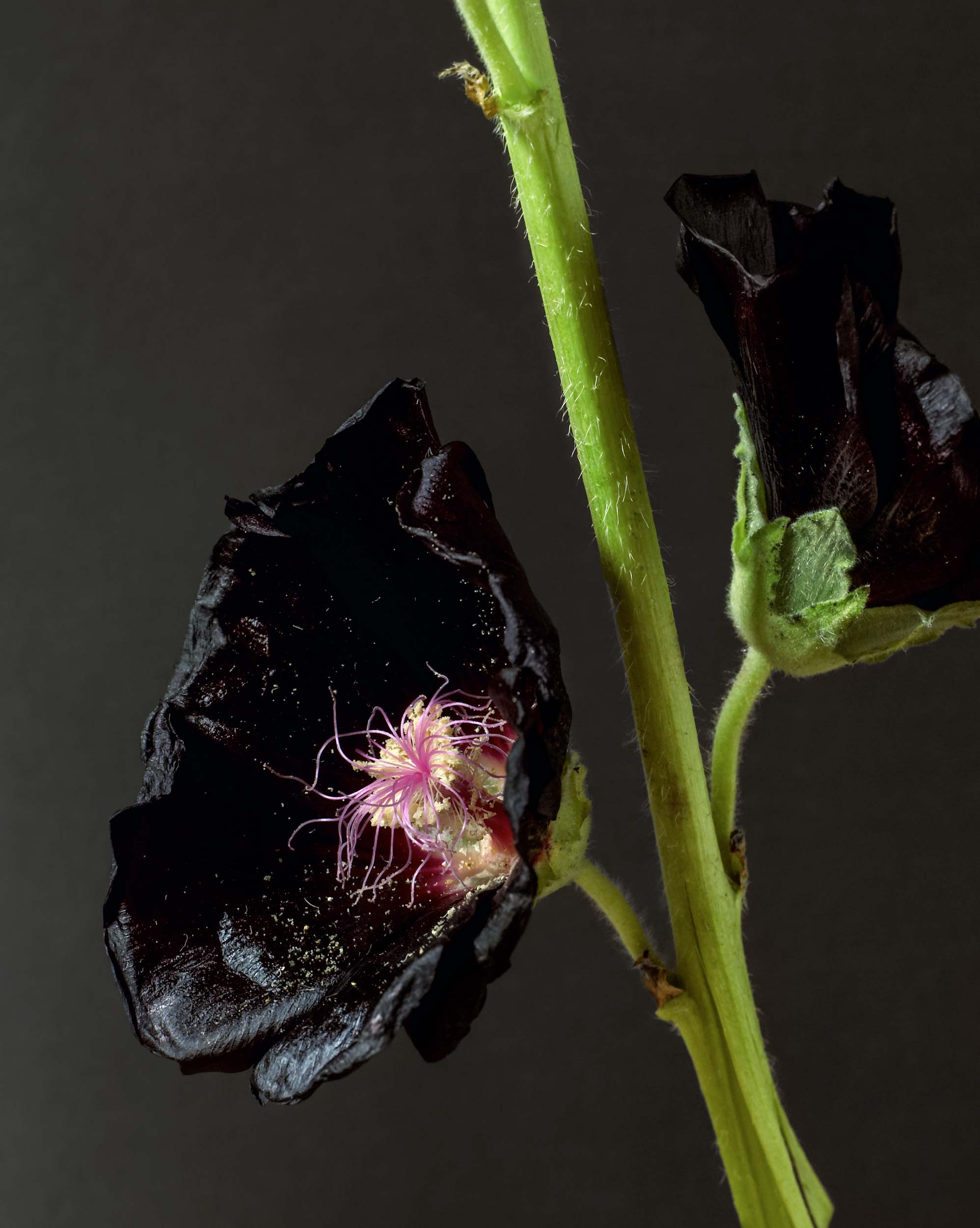
Hellebore
Known as winter roses because they bloom during our coldest months, frost-hardy hellebores in their daintily speckled pinks, maroons and whites brighten up dull winter gardens and are a little bit of woodland magic under trees. Black versions such as ‘Slaty Blue’ have a new-romantic quality about them and bring to mind rustling taffeta Victorian gowns in sombre mourning shades. Pick them on a wintry day and pop them in a vase to be admired while you read Jane Eyre.
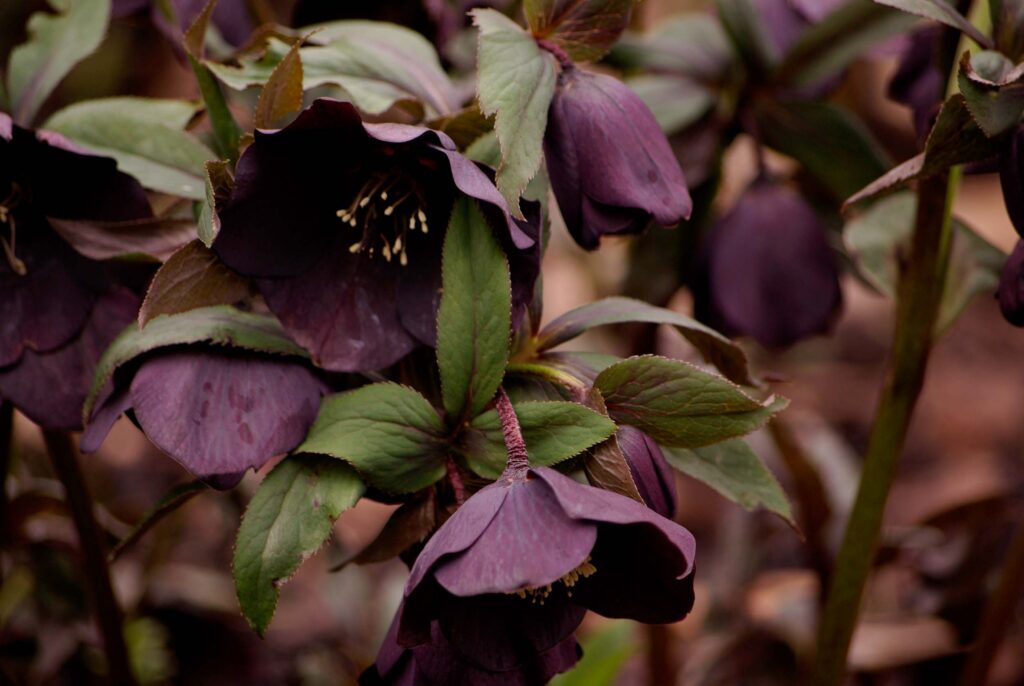
Bat flower
“Have you ever danced with the devil in the pale moonlight?” has to be one of the best lines ever in a Batman movie. Jack Nicholson uttered the words as the Joker, then Prince made them even cooler in his song “Batdance”. Which all thematically relates to tropical herb Tacca chantrieri, also known as the bat flower, the devil flower and the cat’s whiskers (and I hadn’t even got to Catwoman yet). Definitely a collector’s plant – you won’t stumble on it at your local garden centre – but it can be viewed in our most Gothic city, at Otago Museum’s Tūhura Tropical Forest.
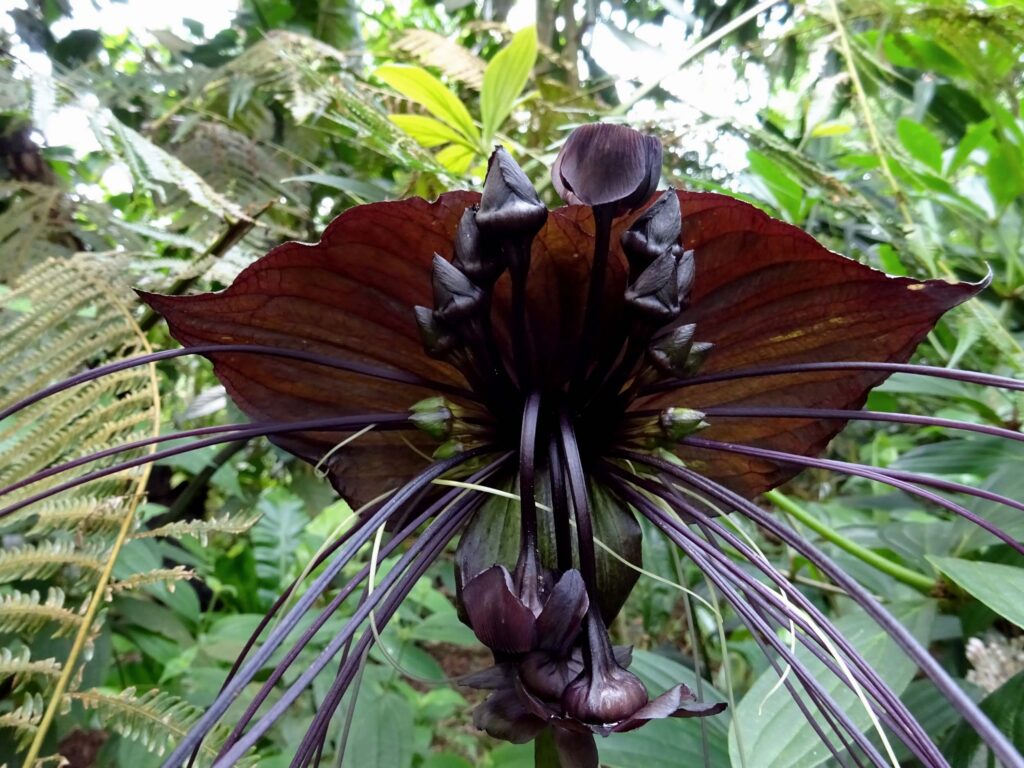
Chocolate cosmos
Although it leans towards dark mahogany rather than black, chocolate cosmos gets an honorary mention because it actually smells like chocolate! Unlike other types of cosmos, which grow from seed and are annuals, chocolate cosmos is a perennial that grows from a tuber. Having said that, I’ve never managed to keep one alive for more than a year or two, but I buy one every now and then for the novelty chocolate value.
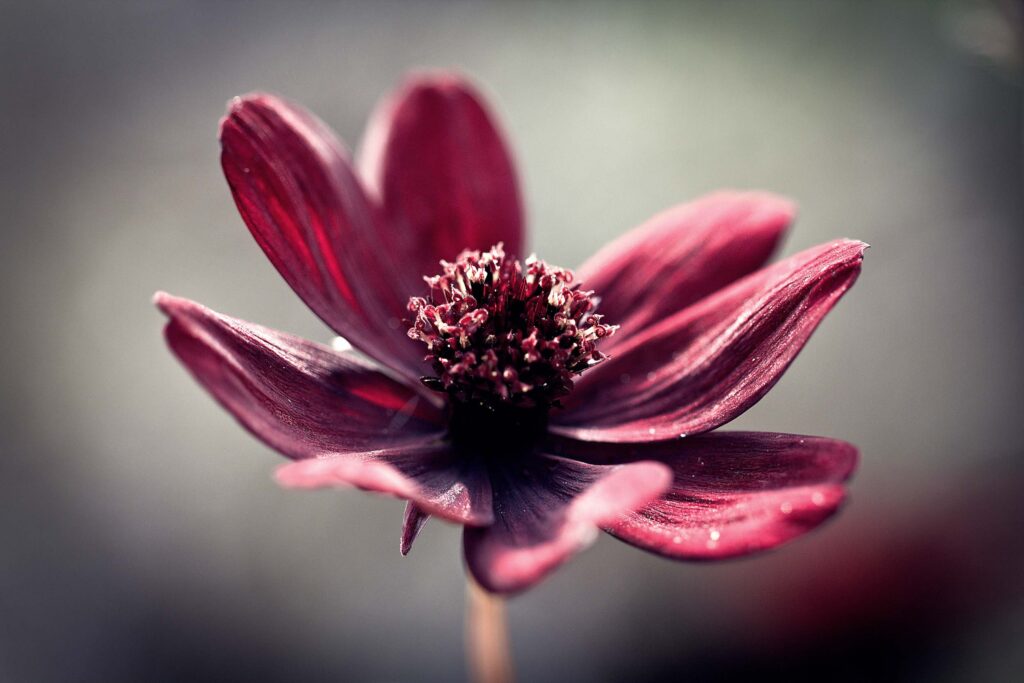
Elder
Anthocyanins – the pigments that give red, blue and purple plants their dark colouring – also have many health-giving properties and are thought to help remove free radicals from the body. Thus, blue-black elderberries are packed with them. Sambucus nigra ‘Black Beauty’ also has striking black foliage, which looks magnificent as a backdrop for its frothy pink umbels of lemon-scented flowers. Grow it as a shrub or small tree and nibble on the berries in autumn.

